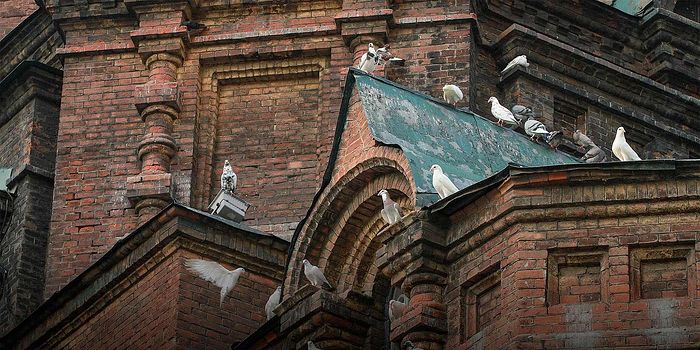Source: Sixth Tone
August 29, 2017
When the Russians came to northeastern China at the dawn of the last century, they brought with them their native art, culture, and religion. At the many small stations dotted along the Chinese Eastern Railway, a vast length of track crisscrossing the Qing Dynasty’s territories in Manchuria, foreign immigrants from Russia and beyond constructed a number of lofty cathedrals, churches, and synagogues in which to practice their religions. Many of these structures were demolished long ago, some are now no more than abandoned ruins, and still others have been transformed into museums and tourist spots.
Harbin was where these various ethnicities and religions mixed, and today, the city in Heilongjiang province is like a museum displaying their many different styles of churches. On East Dazhi Street stands Harbin’s only Eastern Orthodox church still open for regular worship: the Church of the Intercession of the Mother of God. The building’s conspicuous onion domes loom large over the city, flanked by vermilion walls and deep-green roof tiles. The arched windows and gilded Orthodox cross lend the church a particularly solemn air.
Back in 1902, Ukrainian immigrants arriving in Harbin built this cemetery chapel for themselves beside the Ukraine Club on what was then called Gogol Street, named after the prolific author. In 1930, the chapel was moved to East Dazhi Street, and the building was completely redesigned by renowned Russian architect Yuri Zhdanov. Standing before the entrance to the Eastern Orthodox church is a prayer pavilion approximately 2 meters in height, a relic from the former cemetery once frequented by Russian immigrants praying for the soldiers lost in the Russo-Japanese War of 1904-1905.
Next door to the Church of the Intercession is the Harbin Nangang Christian Church, originally a place of worship for Lutheran immigrants from Germany, many of whom came to Harbin during the interwar period. Though it represents a different Christian denomination, this church is almost identical in color to the Eastern Orthodox church beside it, with the same red walls and green roofs. The only difference is that the Protestant church was built in the Gothic style.
...Read the rest at Sixth Tone.




